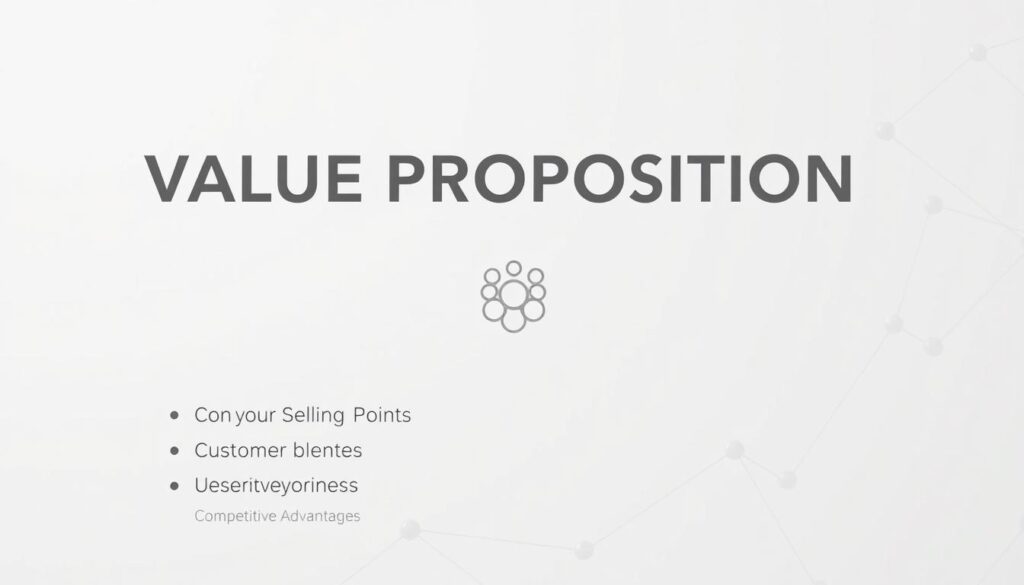Building lasting relationships with buyers starts long before a product hits shelves. A well-crafted strategy that aligns product launches with ongoing engagement separates fleeting transactions from enduring partnerships. This approach transforms first-time users into brand advocates while driving predictable revenue growth.
Forward-thinking organizations treat retention as a core pillar of their launch plans rather than a post-sale afterthought. By integrating loyalty-building elements into every phase – from concept development to post-purchase support – teams create seamless experiences that resonate with modern audiences. Cross-departmental collaboration ensures messaging, features, and support systems work in harmony to meet evolving needs.
The financial benefits of this methodology are clear. Businesses prioritizing sustained engagement see 3-5x higher lifetime value compared to those focused solely on acquisition. When product teams, marketers, and service specialists unite around shared retention goals, they build competitive moats that withstand market shifts.
Key Takeaways
- Loyalty planning should begin during product development phases
- Cross-functional alignment creates cohesive user experiences
- Retention-focused launches reduce long-term acquisition costs
- Ongoing engagement drives predictable revenue streams
- Data integration improves lifecycle personalization
Overview of Go-To-Market Strategy Fundamentals
Effective product introductions require meticulous planning that bridges business objectives with audience needs. Unlike traditional approaches, modern launch frameworks prioritize both immediate impact and sustained relationships through strategic alignment.
Essential Building Blocks
Five interconnected elements form the foundation of successful market entry. Clear audience identification combines demographic data with behavioral patterns, while distribution models determine how solutions reach buyers. Precise pricing strategies balance profitability with accessibility, creating win-win scenarios.
Messaging must articulate unique value propositions that resonate emotionally and functionally. As one industry leader notes: “Positioning isn’t about being different – it’s about being irreplaceable.” This requires continuous refinement based on real-time feedback loops.
Specialized Versus General Approaches
While marketing plans focus on broad engagement, specialized entry strategies target specific launch windows. The former builds brand awareness over years; the latter drives rapid adoption through tailored tactics. Successful organizations integrate both frameworks, using initial launches to fuel long-term nurturing campaigns.
Analytical tools help teams identify untapped opportunities in crowded sectors. By mapping competitor weaknesses to unmet needs, businesses carve distinct market positions. This approach transforms product introductions into relationship-building catalysts rather than isolated events.
Understanding Go to Market Customer Retention
The true measure of a product’s success lies in its ability to keep users engaged over time. Organizations achieving sustainable growth integrate loyalty-building practices into every operational layer, transforming initial sales into long-term partnerships. This approach requires continuous alignment between product teams, support staff, and leadership.
The Growth Engine Hidden in Existing Relationships
Retained accounts generate 65% lower operational costs compared to acquiring new buyers, according to SaaS industry benchmarks. Software AG’s focus on platform maturity demonstrates this principle – their client success programs increased renewal rates by 18% within two years. Mature users not only stay longer but often upgrade services organically.
Measuring What Matters
Effective tracking moves beyond basic churn rates. Modern frameworks analyze three dimensions:
| Indicator Type | Key Metrics | Strategic Impact |
|---|---|---|
| Leading | Feature adoption rate Support ticket trends |
Predicts renewal likelihood |
| Lagging | Net revenue retention Expansion revenue |
Measures financial outcomes |
Net revenue retention (NRR) has become the gold standard, combining retention and expansion metrics. Companies with NRR above 120% typically achieve 3x faster valuation growth than industry averages. This metric directly reflects how well organizations convert satisfied users into revenue-generating advocates.
Defining Your Target Market and Ideal Customer Profile
Effective targeting begins with dissecting organizational decision-making structures. The Harvard Business Review reveals that 6.8 stakeholders typically influence B2B purchases, each with distinct priorities. This complexity demands a surgical approach to persona development, moving beyond job titles to map how roles like Approvers and Gatekeepers shape long-term engagement.
Developing Buyer Personas and Mapping the Journey
Sophisticated retention strategies require analyzing how different stakeholders interact with solutions over time. A product champion might drive initial adoption, while financial controllers determine renewal viability. Teams that map these relationships uncover hidden leverage points for sustained growth.
| Role | Key Influence Point | Retention Driver |
|---|---|---|
| Initiator | Identifies needs | Alignment with strategic goals |
| User | Daily adoption rates | Feature accessibility |
| Decision Maker | Budget allocation | ROI transparency |
| Gatekeeper | Information flow | Relationship nurturing |
Journey mapping becomes critical when expansion opportunities arise. While technical teams prioritize functionality, executives seek measurable business outcomes. Organizations that address both perspectives through tailored messaging see 42% higher renewal rates according to recent SaaS industry data.
Successful teams track evolving needs across three phases:
- Onboarding effectiveness (0-90 days)
- Value realization (6-18 months)
- Expansion readiness (18+ months)
This layered approach transforms generic profiles into dynamic guides for personalized engagement. By anticipating role-specific concerns at each lifecycle stage, businesses create frictionless paths from initial purchase to multi-year partnerships.
Crafting a Compelling Value Proposition and Messaging
Successful product narratives don’t just sell features—they build ongoing relevance. Organizations that master this balance create messaging frameworks addressing immediate needs while laying groundwork for long-term partnerships. The process begins by translating buyer persona insights into targeted communication strategies for each decision-making role.

Positioning Your Product for Maximum Impact
Effective value propositions answer two critical questions: “Why choose us now?” and “Why stay with us later?” For decision-makers, emphasize measurable ROI and risk reduction. End-users need clear explanations of daily workflow improvements. Technical stakeholders often prioritize integration capabilities and scalability.
Software companies like HubSpot demonstrate this principle well. Their platform messaging highlights immediate marketing automation benefits while subtly reinforcing future expansion potential through ecosystem integrations. This dual focus converts trial users into long-term subscribers.
Testing, Refining, and Aligning Your Messaging
Message validation requires continuous experimentation across channels. Teams should:
- Compare engagement rates between LinkedIn posts and email campaigns
- Track response patterns in renewal conversations
- Analyze expansion offer conversion paths
One B2B SaaS company increased upsell conversions by 27% after discovering their financial gatekeepers responded better to case studies than feature lists. Social media tests revealed Twitter threads outperformed Facebook ads for technical audiences, prompting budget reallocation.
Refinement cycles should occur quarterly or after major product updates. Alignment between sales scripts and support communications prevents mixed signals that erode trust. When messaging evolves with user maturity levels, organizations maintain relevance through entire lifecycle journeys.
Strategic Market Segmentation and Competitive Analysis
Effective segmentation reveals hidden opportunities competitors often overlook. Traditional methods focusing on demographics and firmographics miss critical patterns in user behavior and loyalty potential. Advanced analysis examines how different groups interact with solutions over years, not just initial purchase decisions.
Uncovering Hidden Advantages
Sophisticated teams evaluate three dimensions when identifying gaps:
- Usage frequency across product features
- Expansion rates within existing accounts
- Competitor renewal strategy weaknesses
A Forrester study found companies analyzing maturity-level segmentation achieve 23% higher repeat purchase rates. Early adopters might crave innovation, while mainstream users prioritize stability. Tailoring experiences to these preferences builds lasting relevance.
| Analysis Focus | Retention Metric | Opportunity Type |
|---|---|---|
| Competitor Onboarding | 90-day churn rates | Improved training workflows |
| Pricing Models | Expansion revenue | Tiered service packages |
| Support Systems | CSAT scores | Proactive success programs |
Slack’s approach demonstrates this principle. By targeting teams frustrated with email overload, they created tailored onboarding for different departments. This strategy helped them capture 43% of the enterprise communication market within five years.
Oversaturated markets still contain pockets of unmet needs. Analyzing competitor renewal processes often exposes gaps in post-sale support. Teams addressing these weaknesses build moats competitors struggle to breach.
Building a Cross-Functional GTM Team
Successful product launches depend on more than individual expertise—they require synchronized efforts across departments. Organizations excelling in retention strategies structure their teams to combine specialized knowledge with shared accountability. This approach breaks down silos while maintaining role-specific focus areas.

Key Roles in Product, Sales, and Success
Product specialists act as customer advocates, translating usage data into feature enhancements. They prioritize updates that address recurring support issues while maintaining technical roadmaps. Sales professionals in these teams need negotiation skills for both initial deals and contract renewals.
Customer success representatives provide frontline insights about adoption barriers. Their early warnings about feature confusion or billing concerns help prevent preventable churn. One SaaS company reduced cancellations by 15% after giving success teams direct input into product development cycles.
Fostering Collaboration Through Communication
Weekly alignment meetings ensure all departments share critical updates. Teams use standardized dashboards tracking:
- Feature adoption rates
- Expansion opportunity pipelines
- Support ticket resolution times
A structured onboarding process for new members maintains focus. Departments gradually integrate additional specialists as launch complexity increases. This phased growth prevents communication overload while ensuring expertise arrives when needed most.
| Role | Retention Contribution | Key Metric |
|---|---|---|
| Product Lead | Feature optimization | Usage frequency |
| Sales Strategist | Contract structuring | Renewal probability |
| Success Manager | Adoption monitoring | Churn risk alerts |
Designing an Effective GTM Plan and Timeline
Crafting a high-impact market entry requires meticulous orchestration of resources and timelines. Teams must balance short-term conversion targets with mechanisms that nurture lasting engagement. This dual focus transforms launch plans into growth engines that sustain momentum beyond initial sales.
Aligning Budget, Channels, and Sales Cycle Execution
Resource allocation separates temporary spikes from sustained growth. Effective strategies dedicate 40-50% of budgets to post-launch initiatives like onboarding programs and success tracking tools. Channel selection evolves through continuous testing – platforms driving quick wins often differ from those fostering long-term relationships.
| Planning Element | Resource Allocation | Impact Metric |
|---|---|---|
| Budget Distribution | 55% acquisition / 45% retention | 3-year LTV increase |
| Channel Optimization | Monthly performance reviews | Engagement duration |
| Sales Cycle Design | Built-in renewal triggers | Repeat purchase rate |
| Technology Investment | Adoption tracking systems | Feature usage growth |
| Feedback Integration | Quarterly strategy audits | Churn reduction |
Sales processes gain efficiency when aligned with predictive forecasting techniques. Teams using milestone-based timelines report 31% faster issue resolution during critical phases. Key checkpoints include:
- Pre-launch channel validation (90 days)
- Post-purchase education (30-60 days)
- Expansion opportunity mapping (180 days)
Execution models thrive on real-time adjustments. One enterprise software company improved renewal rates by 19% after shifting resources from underperforming webinars to personalized email nurtures. Continuous alignment ensures every dollar spent advances both immediate objectives and multi-year partnerships.
Leveraging Data, Telemetry, and Customer Insights for Retention
Modern retention strategies thrive on actionable intelligence. Sophisticated analytics platforms transform raw numbers into roadmaps for sustained engagement. By tracking behavioral patterns across user journeys, teams identify friction points and expansion opportunities hidden in daily interactions.
Utilizing Analytics to Inform Strategic Decisions
Software AG’s integration of Gainsight with Parameters.io demonstrates this principle. Their system tracks transaction volumes across development (light blue), testing (pink), and production (dark blue) environments. This differentiation reveals whether usage spikes represent genuine adoption or temporary experimentation.
Three critical insights emerge from such integrations:
- Feature utilization trends across user segments
- Environment-specific engagement patterns
- Correlation between support interactions and usage drops
Enhancing Product Adoption with Telemetry Integration
Telemetry data exposes gaps between perceived and actual value. Teams monitoring real-time usage metrics can:
- Adjust onboarding flows for underused features
- Trigger personalized training when engagement dips
- Identify power users for beta testing programs
Organizations using these techniques report 28% faster adoption rates for new capabilities. The key lies in translating data points into targeted interventions that keep users actively deriving value.
FAQ
How do retention strategies differ from acquisition-focused GTM plans?
Retention-centric strategies prioritize existing user relationships through personalized engagement, adoption monitoring, and churn prevention tactics. Unlike acquisition models focused on lead generation, they leverage usage data and success metrics to drive recurring value.
What three metrics best predict customer retention success?
Net Revenue Retention (NRR), product adoption rates, and Customer Health Scores provide the clearest retention insights. These KPIs track expansion opportunities, feature utilization patterns, and relationship risks before churn occurs.
Why do cross-functional teams outperform siloed groups in retention efforts?
Collaborative teams combining product, sales, and success expertise identify adoption barriers faster. Shared customer journey insights enable proactive interventions – like Salesforce’s Account-Based Success model aligning technical support with renewal managers.
How does telemetry integration improve retention outcomes?
Embedded usage tracking (Adobe Analytics, Mixpanel) reveals feature engagement gaps. Teams trigger automated nurture campaigns when users hit predefined thresholds – HubSpot’s onboarding alerts for inactive trial accounts demonstrate this approach.
What messaging adjustments boost retention during market shifts?
Recalibrate value propositions around evolving priorities through win/loss analysis and sentiment tracking. Microsoft’s shift to hybrid-work positioning in 2022 increased enterprise renewals by 18% despite economic uncertainty.
When should companies revisit their ideal customer profile (ICP)?
Conduct ICP audits quarterly if churn exceeds 5% or expansion rates drop. Segment analysis often reveals underserved niches – ZoomInfo’s 2021 healthcare vertical pivot captured 23% untapped market share within 9 months.



